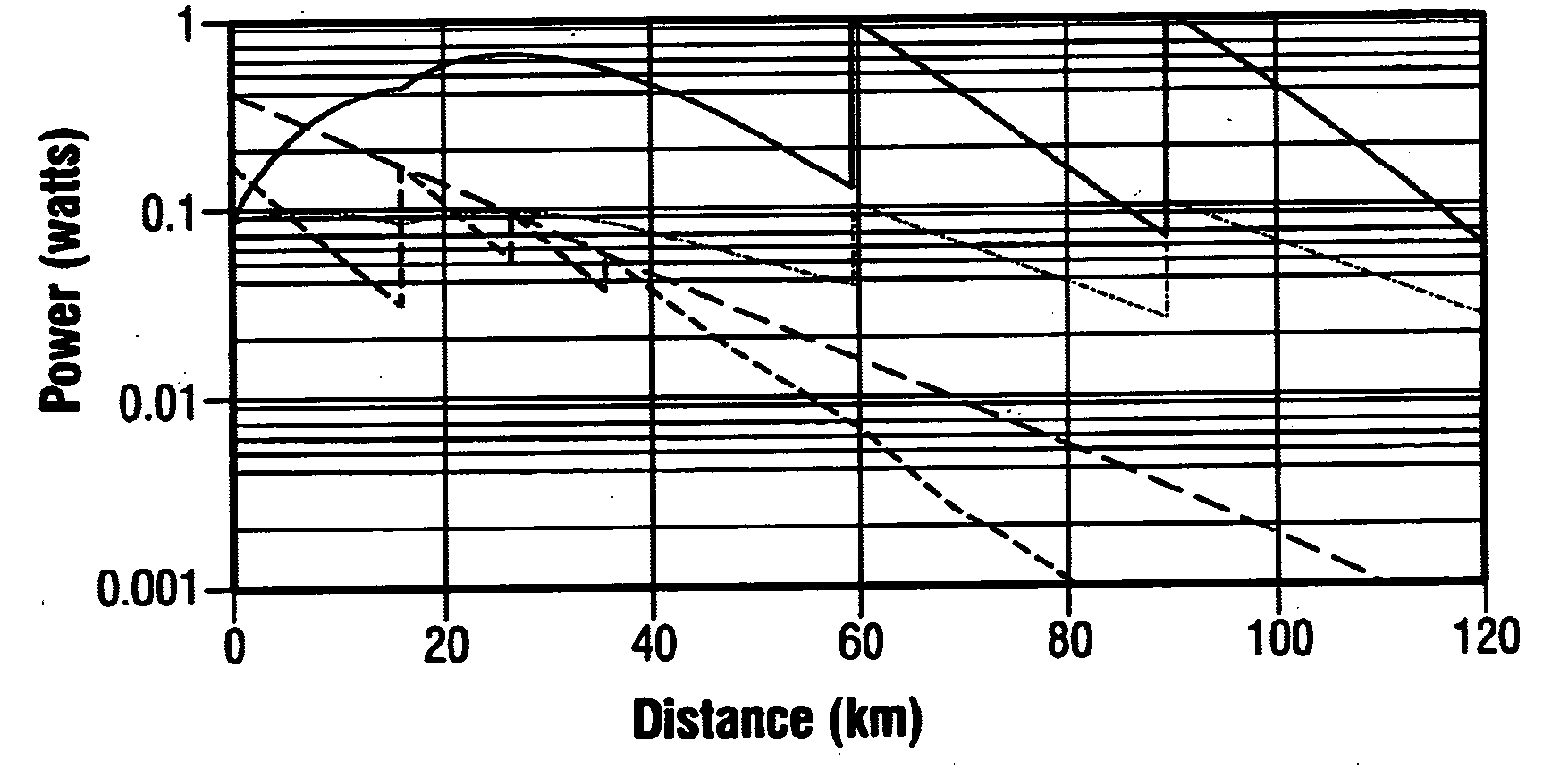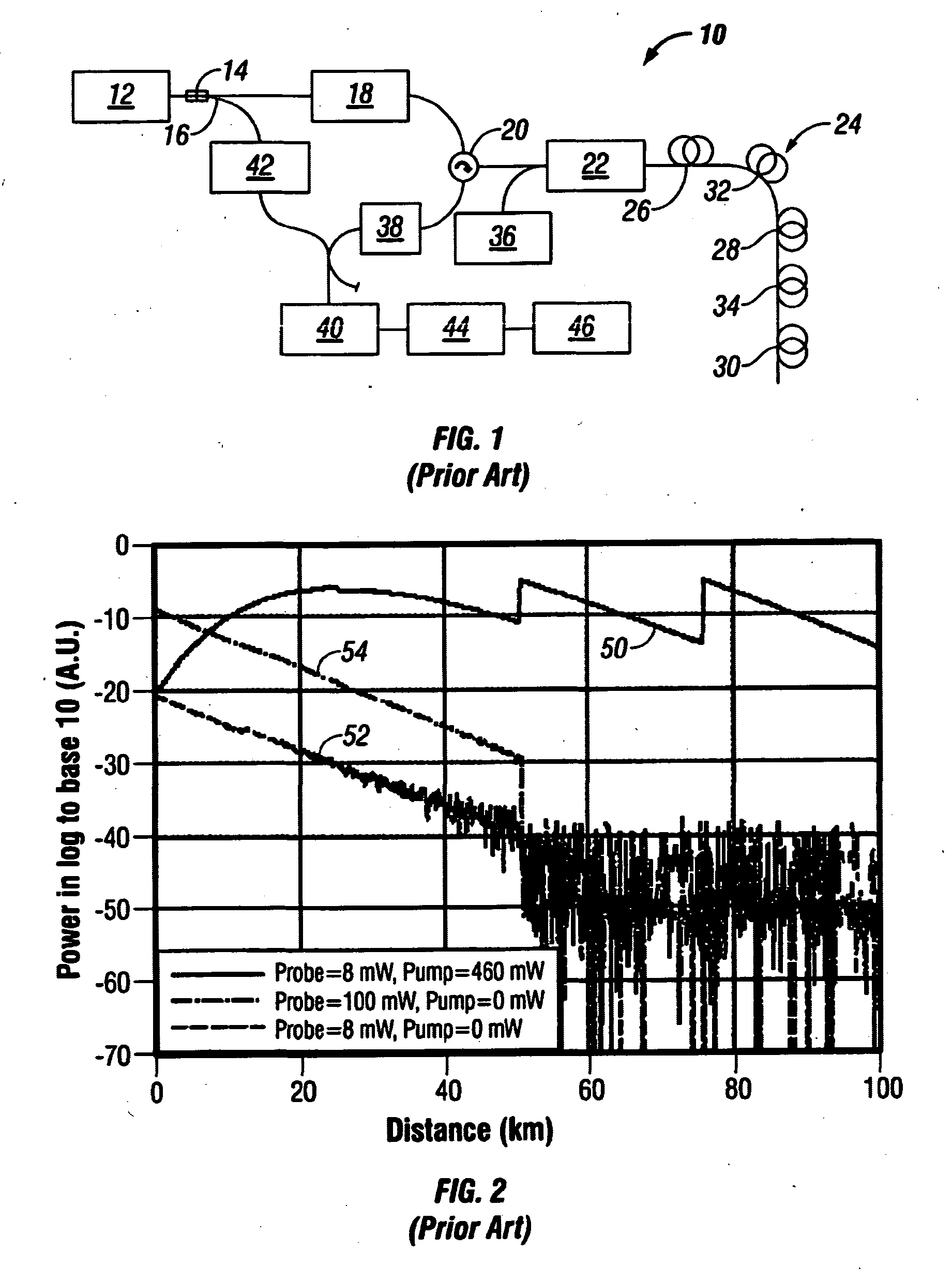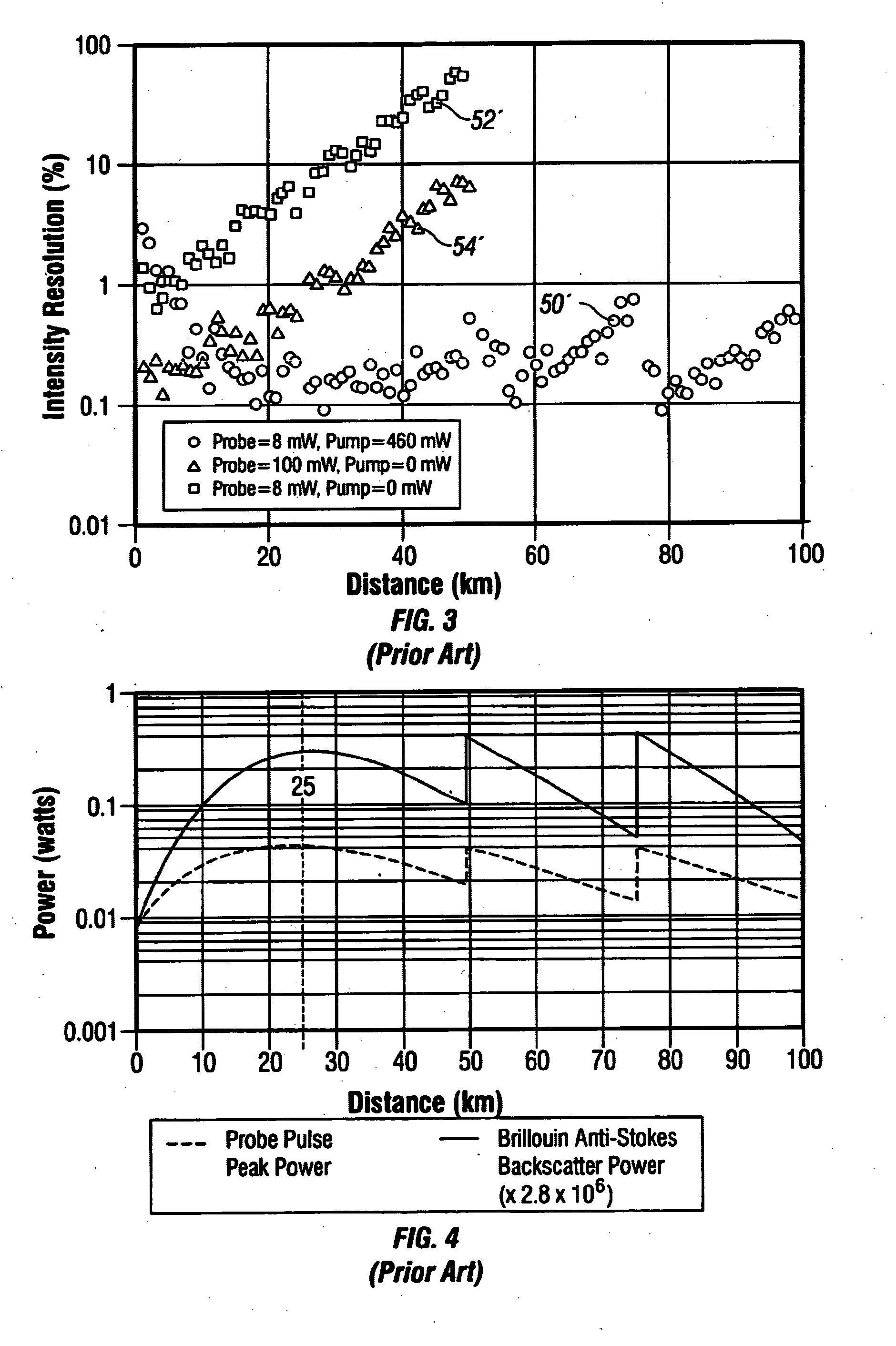[0006]Accordingly, a first aspect of the present invention is directed to a method of providing Raman amplification in an
optical fiber sensing system, comprising: generating a probe pulse of light at a probe
wavelength; launching the probe pulse into a sensing optical fiber; generating pump light at a pump
wavelength shorter than the probe wavelength; modulating the pump light to produce a time-varying intensity profile; launching the pump light into the sensing fiber such that the intensity of the launched pump light during launch of the probe pulse is different from the intensity at one or more other times; and propagating the pump light and the probe pulse along the sensing fiber to achieve Raman amplification of backscattered light produced by the probe pulse as it propagates.
[0007]Hence, the pump power is modulated such that the pump power travelling at about the same time as the probe pulse (allowing for chromatic dispersion effects, where different wavelengths have different propagation velocities in the fiber) is different from the pump power travelling in the fiber at other times, and in particular when the backscattered light is travelling back along the fiber. In this way, the Raman amplification experienced by the probe pulse and by the
backscatter can be controlled separately, to optimise the performance of the system. The backscattered light can be amplified to give a bigger output
signal from the fiber, thus improving the
signal-to-
noise ratio, while amplification experienced by the probe pulse (which gives a corresponding increase to the backscatter power so can be beneficial) can be limited to keep the probe pulse below the power threshold for
nonlinear distortion effects.
[0008]In some embodiments, the intensity of the pump light during launch of the probe pulse is substantially zero so that the probe pulse experiences substantially no Raman amplification. This arrangement allows the maximum probe pulse power that tolerates nonlinear effects to be used at launch, so that high backscatter levels are received from the front part of the fiber, while backscatter produced at all points along the fiber is amplified as it propagates back along the fiber and meets the oncoming pump power.
[0009]Alternatively, the intensity of the pump light during launch of the probe pulse may be greater than zero, so that the probe pulse experiences some Raman amplification. While the initial probe pulse power should be reduced so that the Raman amplification does not push it above the nonlinear threshold, thus also reducing the initial backscatter power, the probe pulse power can be maintained at a higher level over a longer distance than with a zero pump power at probe launch.
Backscatter levels are thus higher over more of the fiber, thereby extending the range of the system. Preferably, the intensity of the pump light during the launch of the probe pulse is sufficient to amplify the probe pulse to an intensity below a threshold above which the probe pulse would be distorted by nonlinear effects, so that the benefits of an extended range are not offset by a degradation in
signal quality resulting from
nonlinear distortion.
[0010]The method may further comprise introducing a time
delay into forward propagating light in the sensing fiber at either the probe wavelength or the pump wavelength such that after the
delay, the probe pulse overlaps a part of the intensity profile of the pump light having a greater intensity than the part overlapped by the probe pulse before the
delay, and experiences Raman amplification. The time delay can be introduced at any location along the sensing fiber, so that the probe pulse can begin to experience Raman amplification at a selected point, such as that where the probe power has decayed sufficiently that nonlinear effects will not become a problem if the pulse is amplified. Thus, the time delay may be introduced such that the intensities of the probe pulse and of the pump light with which it overlaps after the delay are such that the probe pulse is amplified by the pump light to an intensity below a threshold above which the probe pulse would be distorted by nonlinear effects. The probe pulse can thereby be maintained near a maximum
power level that avoids
distortion over some considerable distance, particularly if several
time delays are introduced so that the pump power available to amplify the probe pulse is repeatedly boosted. Also, in the case of a non-zero pump power at probe launch, the pump energy that has been depleted by conversion to the probe wavelength during Raman amplification can be replenished by the time shift, to maintain probe amplification.
[0011]The invention thus offers various improvements to Raman amplification of the various wavelengths propagating in a sensing fiber. By starting with high probe pulse power and a moderate (or zero) pump power at the launching end of the fiber, the near-end backscatter signals can be made strong due to a strong probe and yet amplification of the backscatter signals can still be maximised. Further along the fiber, the amplified backscatter signals are reduced because of the losses experienced by the probe and also a reduction of the
Raman gain, since the pump is also attenuated by propagation losses. Introducing a relative delay between the modulated pump and the probe pulse allows the probe pulse to be switched from a low power to a high power region of the pump waveform, to increase Raman amplification. This also allows the depleted power that travels with the probe pulse to be replenished.
 Login to View More
Login to View More  Login to View More
Login to View More 


